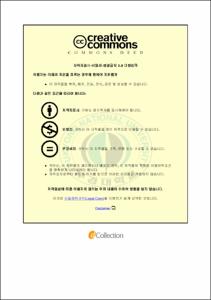역수요체계를 이용한 주요 수산물의 수요 및 식습관 형성에 관한 연구
- Alternative Title
- A Study on Major Seafood Demand and Consumption Habit Formation by Inverse Demand System
- Abstract
- The main purpose of this study is to analyse and compare demand structures of seafood and non-seafood. More precisely, it aims at estimating the parameters of both short-run and long-run flexibilities of main seafood and non-seafood and consumers' habit formation, using an inverse demand system and to provide meaningful policy implications.
For the analysis, an econometric approach was adopted. An error correction model was applied, which includes habit formation parameters in the inverse demand model. The target food items of the analysis were fish(mackerel, hairtail, yellow croaker and squid), livestock products(pork, beef and chicken), vegetables and rice. For the per captia consumption of main seafood and non-seafood, the annual data was obtained from 'the food balance sheet' published annually by KREI(Korea Rural Economic Institute). Average prices of the seafood were calculated, based on auction quantities and prices from 'Annual Statistics on Cooperative Sales of Fishery Products'(National Federation of Fisheries Cooperatives). For livestock products were used wholesales prices from 'Monthly Statistics of Agricultural Cooperatives'(National Agricultural Cooperatives Federation) and 'Information on Prices, Supplies and Demands of Livestock Products'(Livestock Industry Cooperatives). Vegetable prices per kg were calculated by using producer price index while rice price was converted to price/kg, based on the price of the Bank of Korea. The period of the datas ranges from 1970's to 2010's.
Because time-series data were used, the unit root and the co-integration tests were conducted to identify the stationarity and the long-run equilibrium of the variables. Model estimation was carried out, usingh Seemingly Unrelated Regression(SUR) and Three Stage Least Squares(3SLS) techniques.
Looking at the results of the parameter estimation of long-run demand equation, the scale flexibilities were significant at all conventional significance levels for all products except for mackerel and yellow croaker. All own price flexibilities except for rice showed statistical significance. The scale flexibilities and their own price flexibilities showed negative values, which are consistent with demand theory. All scale flexibilities except for vegetables and rice were higher than –1.0. The own price flexibilities were relatively higher in seafood than in livestock products.
As all estimates of short-run demand equations and the scale flexibilities were not significant. The own price flexibilities were estimated to be significant with high degree of precision in seafood and chicken and showed negative values. Habit formation coefficients were significant in all foods except for yellow croaker. Those of mackerel, hairtail, vegetables and rice were relatively high while those of squid and livestock products were relatively low.
Taking a close look at the changes in seafood consumption pattern, consumption of rice has been decreasing and the animal protein food consumption has been increasing. In particular, the habit formation parameter estimates and demand flexibility estimates of seafood are expected to provide meaningful information for the mid- and long-term demand forecasting and the development of seafood production/supply policy of seafood.
- Issued Date
- 2014
- Awarded Date
- 2014. 2
- Type
- Dissertation
- Publisher
- 부경대학교
- Alternative Author(s)
- Kwon, Hyeok Jun
- Affiliation
- 대학원
- Department
- 대학원 해양산업경영학과
- Advisor
- 박성쾌
- Table Of Contents
- I. 서론 1
1. 연구 배경 및 목적 1
2. 연구 방법 및 내용 3
Ⅱ. 선행연구 검토 4
1. 이론적 연구 4
가. 식습관형성 4
나. 역수요체계 5
2. 실증연구 11
가. 수산물 통상수요분석 11
나. 역수요체계를 이용한 식품수요분석 13
Ⅲ. 이론적 배경 17
1. 식습관형성 모형 17
2. 역수요 모형 21
Ⅳ. 주요 식품의 생산 및 소비 31
1. 생산 31
2. 소비 36
3. 가격 41
Ⅴ. 실증분석 43
1. 분석모형 43
가. 모형설정 43
나. 실증모형 49
2. 분석데이터 50
3. 추정방법 53
가. 단위근 및 공적분 검정 53
나. 오차수정모형 56
다. 외관상무관회귀 58
라. 3단계최소자승법 61
4. 추정결과 및 고찰 69
가. 단위근 검정 69
나. 공적분 검정 71
다. 추정결과 75
Ⅵ. 결론 83
Ⅶ. 참고문헌 86
- Degree
- Doctor
- Files in This Item:
-
-
Download
 역수요체계를 이용한 주요 수산물의 수요 및 식습관 형성에 관한 연구.pdf
기타 데이터 / 1.57 MB / Adobe PDF
역수요체계를 이용한 주요 수산물의 수요 및 식습관 형성에 관한 연구.pdf
기타 데이터 / 1.57 MB / Adobe PDF
-
Items in Repository are protected by copyright, with all rights reserved, unless otherwise indicated.